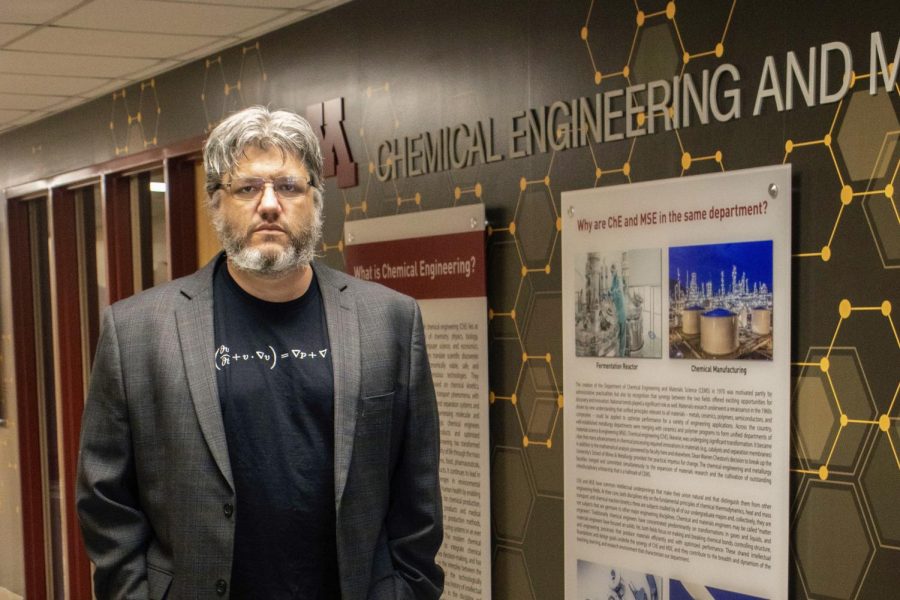Dr. Paul Dauenhauer is looking to revolutionize the way people think about plastic recycling.
For decades, people have relied on the ease of single-use plastics. From plastic water bottles to takeout containers and everything in between, some plastics take hundreds of years to break down whereas others linger as microplastics for centuries.
Dauenhauer’s team at the University of Minnesota has been studying the chemical building blocks that make up common plastics or rubber products to see if they can make them with biodegradable materials instead.
Biomass, like corn, grasses and wood, can decompose faster and more efficiently compared to plastics or other synthetic materials, which is better for the environment, Dauenhauer said.
Because plastics and rubbers are often created using products made with fossil fuels, these alternative materials could reduce fossil fuel use and create a more sustainable business model moving forward, said Yutong Pang, a fourth-year graduate student in the Dauenhauer Research Group.
“A place where we really have struck gold is in shampoos and detergents,” Dauenhauer said.
Laundry detergents use a petroleum-based surfactant, or soap molecule, and often contain a lot of added chemicals because these molecules do not clean very well, he said.
Dauenhauer’s team is working to develop biodegradable soap that does not rely on petroleum-based surfactants, which are made of crude oil, a fossil fuel. Dauenhaur is a co-founder of a Seattle-based company called Sironix Renewables that makes cleaning and personal care products from plants.
Other products his team has been researching include rubbery materials like car tires and the soft rubber that typically coats the bottom of shoes.
“I think there’s this big problem with the future of plastics and polymers in that we would like to recycle them, but when we say, ‘Recycle current materials,’ what does that really mean?” he said.
Dauenhauer said that although many products are labeled “recyclable,” they often are not recycled to be the same product they once were.
Some plastics have different chemical compositions that can prevent them from being recycled into other items. Others can be contaminated by materials like paper or ink, and sorting recycling by hand is time-intensive or even impossible.
Most recycled material is sorted, shredded and converted into small plastic pellets, which can then be melted down and made into new products.
Part of Dauenhaur’s work at the National Science Foundation’s Center for Sustainable Polymers is developing materials that can be recycled in their same form for thousands of years.
“So what are those materials that can be recycled perfectly every single time?” he said. “I mean, if it was done right, we could be using the same atoms over and over and over for centuries. And then we’d create no net waste. That’s the goal.”
The current energy and materials required to make plastics is unsustainable, said Dr. Marc Hillmyer, the director for the National Science Foundation Center for Sustainable Polymers. Because plastics create a lot of waste and can contaminate the environment, researchers need to be more cognizant and thoughtful about how they are designing these materials, he said.
Changing human behavior, which has become heavily reliant on plastics, is unrealistic, and implementing wide-spread policy changes, like a carbon tax, is also challenging, Dauenhauer said. But creating a new product that is as effective as plastics — or more effective — could be the answer.
“I’m really driven by this issue of sustainability,” Dauenhauer said. “Where are we going to be in 100 years or 500 years or 1,000 years? We cannot keep doing it the same way.”



















